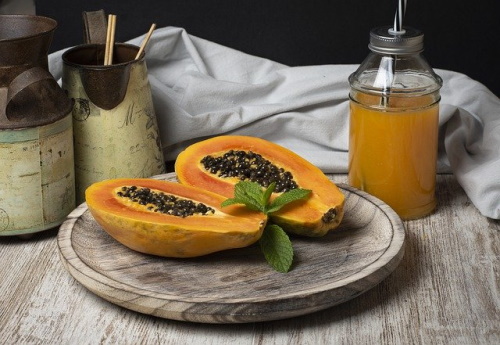In this article, you will learn about diseases of the digestive system as well as some foods for healthy digestion. These diseases of the digestive tract do not specifically affect the liver, gall bladder, the stomach, or the intestines since each of these has their dedicated sections on other areas of this website.

The foods for healthy digestion on this site have as a common element that they act beneficially on the digestive system as a unit. The following information will analyze foods that have specific curative properties for determined organs within the digestive system:
- The liver and gall bladder
- The stomach
- The intestine
The first sections of the digestive tract
The mouth, pharynx, esophagus, and stomach are the first sections or stages of the digestive process that food passes through. In the process the foods themselves act upon these sections because of the food’s characteristics:
- Chemical composition: Sugar promotes dental issues; carcinogenic substances found in certain meat, as well as alcoholic beverages, foster cancer of the mouth, esophagus, and the stomach.
- Physical texture: Tough foods that must be chewed vigorously, strengthen the gums and teeth. However, if they are not well chewed, they can irritate the esophagus and the stomach.
- Temperature: Very hot and very cold foods irritate the digestive mucosa and may be a factor in cancer.
Related reading:
- Browse more Foods articles: https://naturalhealthmessage.com/nutrition/foods/
- Digestive Health guides: https://naturalhealthmessage.com/conditions/digestive-health/
- Supplements & reviews: https://naturalhealthmessage.com/supplements/
Foods For Healthy Digestion
The PAPAYA aids all of the digestive processes due, among other reasons, to its papain content. This enzyme digests proteins and can potentially supplement a lack of digestive juices.
BARLEY flour and primarily malt granules and flour, are well tolerated by frail stomachs. They are beneficial in cases of gastritis dyspepsia, gastroduodenal ulcer, gastroenteritis, and colitis.
BARLEY WATER and malt beverage, are also of great value in cases of digestive distress. As in the case with wheat and rye, barley should be avoided by those who suffer from celiac disease.
CAULIFLOWER is an excellent supplier of vitamins, minerals, and trace elements that vitalize digestive processes. It acts on the digestive tract in general, from the stomach to the colon. Because it is highly digestible, more so than other crucifers, it is preferred for those with stomach ailments. It regulates transit through the intestine both in cases of constipation, as well as diarrhea. Because of this, cauliflower is among the best foods for healthy digestion.
Cauliflower is, together with carrots and asparagus, one of the best vegetables for patients after an acute bout of gastritis or gastroenteritis.
FENNEL contains an essential oil rich in anethole, although in lower proportion than the seeds. This contributes to its digestive and carminative (stop of intestinal gas production) effects. Its fiber content makes it a mild cathartic or laxative. Fennel consumption is recommended in these cases:
- Dyspepsia (indigestion), because of its invigorating effect on digestive processes.
- Constipation, due to intestinal atony (flaccidity or lack of tone).
OLIVES stimulate the digestive processes and the appetite. Eating two or three olives before a meal is a natural aperitif that increases the flow of gastric juices and improves digestion. However, because olives contain so much fiber, they must be chewed well to prevent indigestion.
TIGER NUT is rich in carbohydrates. Its fats are similar in composition to those in olive oil, formed primarily of unsaturated fatty acids, among which linoleic acid stands out. Tiger nut is among the foods that calm digestive systems. It is also a great addition to a diet for gastrointestinal disorders. It contains vitamins B1 and E. Calcium, magnesium, and iron are among its more noteworthy minerals.
WILD OLIVES are found throughout the Mediterranean region. Their fruit is smaller than cultivated olives, but they are more flavorful and medicinal. If they are harvested ripe, they may be eaten directly from the tree. Wild olives are a great addition to the foods good for digestion and bloating.
ZUCCHINI tend to have a soothing effect on the digestive system, which makes it a great candidate for the foods for healthy digestion list. Although it is a species of the squash, it has its own characteristics. For example, it has very little beta carotene, while other squash is very rich in this important vitamin precursor. Both squash and zucchini are very low in fat, sodium, and calories, although squash is the lower in the two nutrients.
Health Disclaimer: The information on this website is for educational uses only and is not a substitute for professional medical advice. Always consult an authorized healthcare provider for any health concerns before using any herbal or natural remedy. We do not establish, treat, cure, or prevent any disease. Reliance on any material from this website is solely at your own risk. We are not responsible for any adverse effects resulting from the use of information or products mentioned on this website.
REFERENCES
- George D. Pamplona-Roger, M.D. “Encyclopedia Of Foods and Their Healing Power.” George D. Pamplona-Roger, M.D. Encyclopedia Of Foods and Their Healing Power. Trans. Annette Melgosa. Vol. 2. Chai Wan: Editorial Safeliz, 2005. 155, 156, 150, 163, 161, 167, 160, 159, 150.
